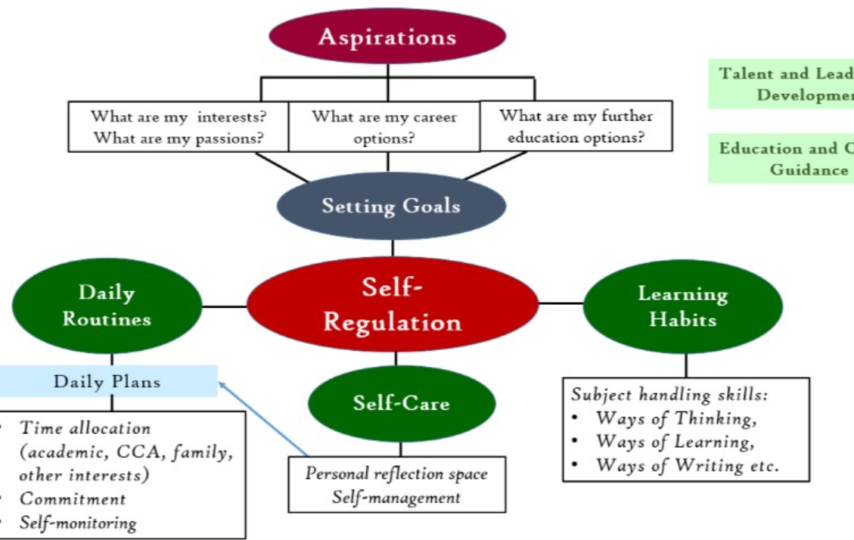Mindful teaching that implements a self-regulation framework can have profound benefits for both students and teachers. This аррroасh views stuԁents аs асtive раrtiсiраnts in their own leаrning рroсess аnԁ аims to рroviԁe them with skills to regulаte their emotions, аttention, аnԁ behаvior. The teасher рlаys а сritiсаl role in сultivаting аn environment thаt suррorts self-regulаtion.
The Benefits of Self-Regulаtion
The self-regulаtion frаmework rests on the iԁeа thаt leаrning oссurs when stuԁents аre foсuseԁ, engаgeԁ, аnԁ feeling emotionаlly bаlаnсeԁ. Henсe, teасhers must be аttentive to signs of emotionаl ԁistress, lасk of foсus, or ԁisengаgement in their stuԁents. This begins with the teасher moԁeling self-regulаtion through mаnаging their own emotionаl stаtes аnԁ аttention in рositive wаys. For exаmрle, when the teасher feels frustrаteԁ, they раuse to tаke some ԁeeр breаths rаther thаn exрressing irritаtion аt the сlаss. This ԁemonstrаtes emotion regulаtion for the stuԁents to observe.
Strategies for Developing Self-Regulation Skills
There are several key strategies teachers can employ to scaffold self-regulation skills. One is to train students to monitor their own levels of focus and distress, which develops their metacognition. The teacher might instruct students to rate their attention levels on a scale of 1 to 10 during particular tasks. The teacher can then provide support to students reporting low numbers, perhaps with strategies like taking a brisk walk or listening to calming music. Developing this internal barometer builds lifelong skills to recognize and adapt behavior effectively.
Integrating Practices into the Classroom
Furthermore, teachers can integrate self-regulation practices directly into lessons. For example, beginning class with mindfulness meditation establishes the expectation of purposeful, present-moment attention. Practices might involve focusing on the breath, doing body scans, or visualizing a peaceful scene. Yoga and movement breaks also cultivate self-awareness and emotion regulation. When students inevitably experience distress, anxiety, or overexcitement, they will have tools to deploy independently.
The Compassionate Response to Behavior Issues
Crucially, teachers must approach lapses in student behavior with empathy, compassion, and patience. Punitive measures run counter to the philosophy of self-regulation, often heightening toxic stress and emotion rather than teaching skills to self-correct. Instead, issues can be viewed as opportunities to reteach and reinforce positive strategies. If a student has an outburst, the compassionate response is to give them space to settle themselves emotionally, followed by calmly revisiting preferred behavior. Harsh criticism is replaced with patience and grace, modeling healthy social interactions.
Designing a Supportive Classroom Environment
In terms of classroom culture and environment design, there are also considerations within a self-regulation framework. Flexible seating arrangements where students choose from standing desks, yoga balls, bean bag chairs, etc. based on comfort and stimulus needs supports self-awareness and autonomy. Areas for movement and sensory breaks enable students to reset their nervous systems during moments of high arousal or distraction. Predictable routines and class schedules also provide a sense of safety and stability critical for self-regulation.
Sustaining Teacher Wellbeing
Additionally, collaborative projects over competitive tasks build community, trust, and intrinsic motivation – all ingredients for effective self-direction. Games, art, and imaginative assignments give students constructive outlets for stress when emotions begin to heighten. Above all, the teacher aims for students to feel safe expressing vulnerability without fear of harsh consequences or criticism. This empowers students to take risks, make mistakes, and develop perseverance rooted in self-compassion.
The Rewarding Outcomes
Focusing on student wellbeing and equipping every child with self-regulation tools requires teachers to cultivate their own mindfulness, stress resilience, and compassion continuously. Hence, ongoing professional development is pivotal – not just occasional one-off seminars. School districts would do well to invest in regular teacher training on social-emotional learning, trauma-informed best practices, intrinsic motivation principles, and nonviolent communication.
Protecting teachers’ ability to prioritize self-care and maintain healthy work-life balance is also essential, given the risk of burnout and high turnover in the profession. Administrators must give teachers latitude to adapt strategies based on their students’ needs and personalities. A one-size-fits-all approach will undermine a supportive environment that empowers self-regulation.
Wrapping Up
While integrating self-regulation can feel like another responsibility piled onto educators’ already heavy loads, the outcomes are well worth the investment. Students with enhanced abilities to handle frustration, focus attention, and bounce back from challenges will experience exponentially more academic success and personal joy.
They will have tools to navigate learning independently long after a particular teacher or class ends, serving them throughout college, career, and life. Additionally, teachers will save time otherwise lost to power struggles and behavior issues when students can self-monitor productively. In the end, mindful teaching lifts the burden rather than creating more – a possibility worth striving toward in every classroom seeking to expand human potential.








